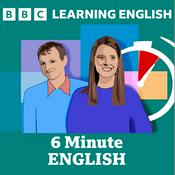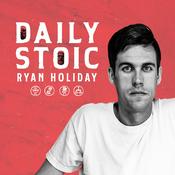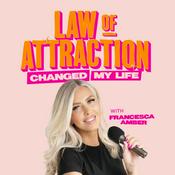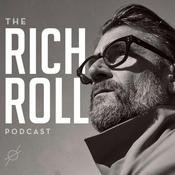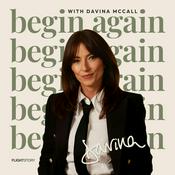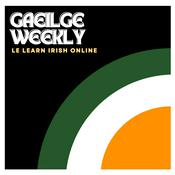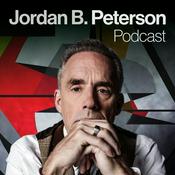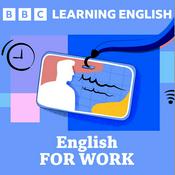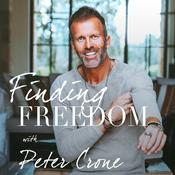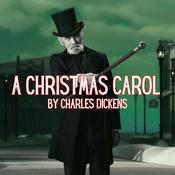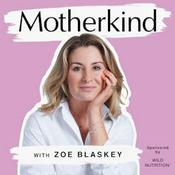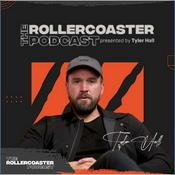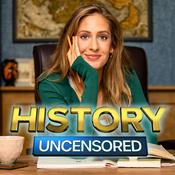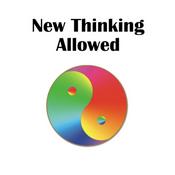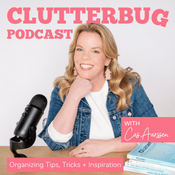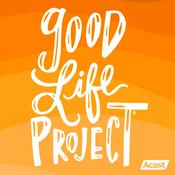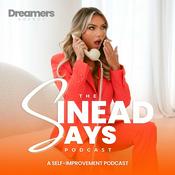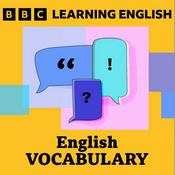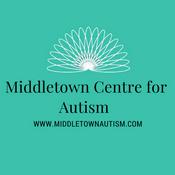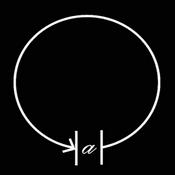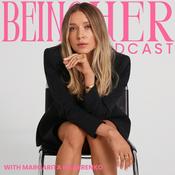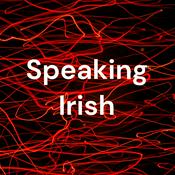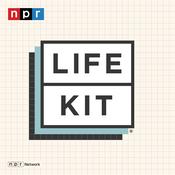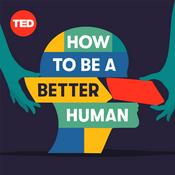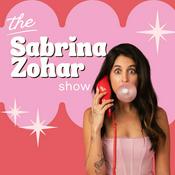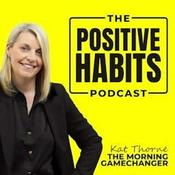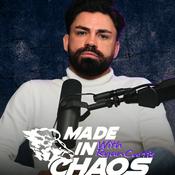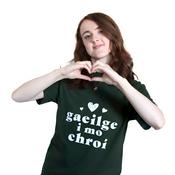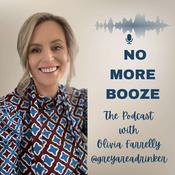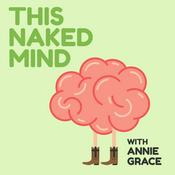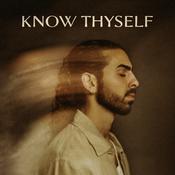For the Life of the World / Yale Center for Faith & Culture
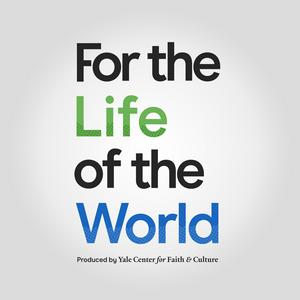
237 episodes

The Nail in the Tree: Sandy Hook School Shooting, Violence, Childhood, Poetry / Carol Ann Davis
14/12/2025 | 58 mins.
Poet and essayist Carol Ann Davis (Fairfield University) joins Evan Rosa for a searching conversation on violence, childhood, and the moral discipline of attention in the aftermath of Sandy Hook. Reflecting on trauma, parenting, childhood, poetry, and faith, Davis resists tidy narratives and invites listeners to dwell with grief, healing, beauty, and pain without resolution.“I don’t believe life feels like beginnings, middles, and ends.”In this episode, Davis reflects on how lived trauma narrows attention, reshapes language, and unsettles conventional storytelling. Together they discuss poetry as dwelling rather than explanation, childhood and formation amid violence, image versus narrative, moral imagination, and the challenge of staying present to suffering.Episode Highlights“Nothing has happened at Hawley School. Please hear me. I have opened every door and seen your children.”“And that was what it is not to suffer. This is the not-suffering, happy-ending story.”“I’m always narrowing focus.”“I think stories lie to us sometimes.”“I think of the shooting as a nail driven into the tree.”“I’m capable of anything. I’m afraid I’m capable of anything.”“I tried to love and out of me came poison.”About Carol Ann DavisCarol Ann Davis is a poet, essayist, and professor of English at Fairfield University. She is the author of the poetry collections Psalm and Atlas Hour, and the essay collection The Nail in the Tree: Essays on Art, Violence, and Childhood. A former longtime editor of the literary journal Crazyhorse, she directs Fairfield University’s Low-Residency MFA and founded Poetry in Communities, an initiative bringing poetry to communities affected by violence. An NEA Fellow in Poetry, Davis’s work has appeared in The Atlantic, The American Poetry Review, Image, Agni, The Georgia Review, and elsewhere. Learn more and follow at https://www.carolanndavis.orgHelpful Links and ResourcesThe Nail in the Tree: Essays on Art, Violence, and Childhood https://www.tupelopress.org/bookstore/p/the-nail-in-the-tree-essays-on-art-violence-and-childhoodSongbird https://www.weslpress.org/9780819502223/songbird/Psalm https://www.tupelopress.org/bookstore/p/psalmAtlas Hour https://www.amazon.com/Atlas-Hour-Carol-Ann-Davis/dp/1936797003Carol Ann Davis official website https://www.carolanndavis.orgShow NotesCarol Ann Davis recounts moving to Newtown, Connecticut just months before Sandy Hook, teaching a course at Fairfield University when news of the shooting first breaksHer young children attended a local elementary schoolConfusion, delay, and the unbearable seconds of not knowing which school was attackedA colleague’s embrace as the reality of the shooting becomes clearParenting under threat and the visceral fear of losing one’s children“Nothing has happened at Hawley School. Please hear me. I have opened every door and seen your children.” (Hawley School’s Principal sends this message to parents, including Carol Ann)Living inside the tension where nothing happened and everything changedWriters allowing mystery, unknowing, and time to remain unresolvedNaming “directly affected families” and later “families of loss”Ethical care for proximity without flattening grief into universalityThe moral value of being useful within an affected communityNarrowing attention as survival, parenting, and poetic disciplineChoosing writing, presence, and community over national policy debatesChildhood formation under the long shadow of gun violence“I think of the shooting as a nail driven into the tree. And I’m the tree.” (Carol Ann quotes her older son, then in 4th grade)Growth as accommodation rather than healing or resolutionIntegration without erasure as a model for living with traumaRefusing happy-ending narratives after mass violence“I don’t believe life feels like beginnings, middles, and ends.”Poetry as dwelling inside experience rather than extracting meaningResisting stories that turn suffering into takeawaysCrucifixion imagery, nails, trees, and the violence of embodiment“I’m capable of anything. I’m afraid I’m capable of anything.”Violence as elemental, human, animal, and morally unsettlingDistinguishing intellectual mastery from dwelling in lived experienceA poem’s turn toward fear: loving children and fearing harm“I tried to love and out of me came poison.”Childhood memory, danger, sweetness, and oceanic smallnessBeing comforted by smallness inside something vast and terrifyingEnding without closure, choosing remembrance over resolution#CarolAnnDavis#PoetryAndViolence#TraumaAndAttention#SandyHook#SandyHookPromise#FaithAndWriting#Poetry#ChildhoodAndMemoryProduction NotesThis podcast featured Carol Ann DavisEdited and Produced by Evan RosaHosted by Evan RosaProduction Assistance by Macie Bridge, Alexa Rollow, Zoë Halaban, Kacie Barrett & Emily BrookfieldA Production of the Yale Center for Faith & Culture at Yale Divinity School https://faith.yale.edu/aboutSupport For the Life of the World podcast by giving to the Yale Center for Faith & Culture: https://faith.yale.edu/give

How to Read Blaise Pascal: Grace, Modern Longing, and Wagering with Fire / Graham Tomlin
03/12/2025 | 55 mins.
“Our longings are much more powerful than our logic, and our desires are stronger than our reason.” (Graham Tomlin on the thought of Blaise Pascal)The Rt. Rev. Dr. Graham Tomlin (St. Mellitus College, the Centre for Cultural Witness) joins Evan Rosa for a sweeping exploration of Blaise Pascal—the 17th-century mathematician, scientist, philosopher, and theologian whose insights into human nature remain strikingly relevant. Tomlin traces Pascal’s life of brilliance and illness, his tension between scientific acclaim and radical devotion, and his deep engagement with Descartes, Montaigne, and Augustine. The conversation moves through Pascal’s analysis of self-deception, his critique of rationalism and skepticism, the transformative Night of Fire, his compassion for the poor, and the wager’s misunderstood meaning. Tomlin presents Pascal as a thinker who speaks directly to our distracted age, revealing a humanity marked by greatness, misery, and a desperate longing only grace can satisfy.This episode was made possible in part by the generous support of the Tyndale House Foundation. Visit tyndale.foundation to learn more.Episode Highlights“Our longings are much more powerful than our logic, and our desires are stronger than our reason.”“The greatness and the refuse of the universe—that’s what we are. We’re the greatest thing and also the worst thing.”“If everybody knew what everybody else said about them, there would not be four friends left in the world.”“Only grace can begin to turn that self-oriented nature around and implant in us a desire for God.”“The reason you cannot believe is not because of your reason; it’s because of your passions.”Show NotesGraham Tomlin introduces the Night of Fire and Pascal’s meditation on “the greatness of the human soul”Evan Rosa frames Pascal as a figure of mystery, mechanics, faith, and modern technological influence.Tomlin contrasts Pascal with Descartes and Montaigne—rationalism vs. skepticism—locating Pascal between their poles.Pascal’s awareness of distraction, competition, and “all men naturally hate each other” surfaces early as a key anthropological insight.Evan notes Nietzsche’s striking admiration: “his blood runs through my veins.”Tomlin elaborates on Pascal’s lifelong tension between scientific achievement and spiritual devotion.The story of the servant discovering the hidden Night of Fire parchment in Pascal’s coat lining is recounted.Tomlin reads the core text: “Joy, joy, joy, tears of joy… Let me never be separated from him.”Pascal’s distinction: “God of Abraham, God of Isaac, God of Jacob, not of the philosophers.”Discussion of Jansenism, Augustinian anthropology, and the gravity of human fallenness.Tomlin sets the philosophical context: Pascal as a counter to both rationalist optimism and skeptical relativism.Pascal’s core tension—grandeur and misery—is presented as the interpretive key to human nature.Quote emerges: “the greatness and the refuse of the universe—that’s what we are.”Tomlin describes Pascal’s political skepticism and the idea that politics offers only “rules for a madhouse.”Pascal’s diagnosis of self-deception: “If everybody knew what everybody else said about them, there would not be four friends left in the world.”Evan raises questions about social hope; Tomlin answers with Pascal’s belief that only grace can break self-love.They explore Pascal’s critique of distraction and the famous line: “the sole cause of man’s unhappiness is that he does not know how to stay quietly in his room.”Tomlin ties this to contemporary digital distraction—“weapons of mass distraction”.The conversation turns to the wager, reframed not as coercion but exposure: unbelief is driven by passions more than reasons.Closing reflections highlight the apologetic project of the Pensées, Pascal’s brilliance, and his ongoing relevance.Helpful Links and ReferencesSpecial thanks to the Center for Christian Witness and Seen and Unseen https://www.seenandunseen.com/Blaise Pascal: The Man Who Made the Modern World, by Graham Tomlin https://www.hachette.co.uk/titles/graham-tomlin/blaise-pascal/9781399807661/Pensées, by Blaise Pascal https://www.gutenberg.org/ebooks/18269Provincial Letters, by Blaise Pascal https://www.gutenberg.org/ebooks/2407Why Being Yourself Is a Bad Idea, by Graham Tomlinhttps://www.amazon.com/Why-Being-Yourself-Bad-Idea/dp/0281087097Montaigne’s Essays https://www.gutenberg.org/ebooks/3600Descartes’ Meditations on First Philosophy https://www.gutenberg.org/ebooks/23306Augustine’s Confessions https://www.gutenberg.org/ebooks/3296About Graham TomlinGraham Tomlin is a British theologian, writer, and church leader. He is the former Bishop of Kensington (2015-2022) in the Church of England and now serves as Director of the Centre for Cultural Witness and President of St Mellitus College in London. He is widely known for connecting theology with cultural life and public imagination. Tomlin is the author of several books, including Looking Through the Cross, The Widening Circle, and Why Being Yourself Is a Bad Idea: And Other Countercultural Notions. His latest book is an intellectual and spiritual biography, Blaise Pascal: The Man Who Made the Modern World.Production NotesThis episode was made possible in part by the generous support of the Tyndale House FoundationThis podcast featured Graham TomlinProduction Assistance by Emily Brookfield and Alexa RollowEdited and Produced by Evan RosaHosted by Evan RosaA production of the Yale Center for Faith & Culture at Yale Divinity School https://faith.yale.edu/aboutSupport For the Life of the World by giving to the Yale Center for Faith & Culture: https://faith.yale.edu/give

Creaturely Loneliness: Desire, Grief, and the Hope of Encounter / Macie Bridge & Ryan McAnnally-Linz (SOLO Part 6)
19/11/2025 | 29 mins.
Loneliness seems to be part of what it means to be a relational being. Does that mean loneliness can never really be “solved”? Here’s one way to think about loneliness: As a gap between relational expectation and social reality—something that signals our essentially relational, reciprocal nature as human beings.This episode is part 6 of a series, SOLO, which explores the theological, moral, and psychological dimensions of loneliness, solitude, and being alone.In this reflective conclusion to the series, Macie Bridge and Ryan McAnnally-Linz explore loneliness not as a pathology to solve but as a universal, creaturely experience that reveals our longing for relationship. Drawing on insights from conversations throughout the series, they consider how loneliness emerges in the gap between what we desire relationally and what we actually have, and why this gap might be intrinsic to being human. They discuss solitude as a vital space for discernment, self-understanding, and listening for God; how risk is inherent to relationships; why the church holds unique potential for embodied community; and how even small interactions with neighbors and strangers can meet real needs. Together they reflect on grief, social isolation, resentment, vulnerability, and the invitation to turn loneliness into attentiveness—to God, to ourselves, and to our neighbors, human and non-human alike.Episode Highlights“Loneliness is just baked into our creaturely lives.”“There really is no solution to loneliness—and also that’s okay.”“We invite a certain level of risk because we invite another person closer to our own human limits.”“There’s no blanket solution. We are all experiencing this thing, but we are all experiencing it differently.”“I realized I could be a gift to her, and she could be a gift to me, even in that small moment.”About Macie BridgeMacie Bridge is Operations Coordinator for the Yale Center for Faith & Culture. Macie is originally from the small town of Groton, Massachusetts, where she was raised in the United Church of Christ. As an undergraduate at Trinity College in Hartford, CT, Macie studied English literature, creative writing, and religious studies. She spent a year in Chapel Hill, North Carolina with the Episcopal Service Corps after receiving her B.A. There, she served as Events & Communications Coordinator for L’Arche North Carolina—an emerging L’Arche community, and therefore an incredible “crash course” into the nonprofit world.About Ryan McAnnally-LinzRyan McAnnally-Linz is Associate Director of the Yale Center for Faith & Culture and a theologian focusing on flourishing, meaning, and the moral life. He is co-author of Public Faith in Action and The Home of God with Miroslav Volf, and Life Worth Living: A Guide to What Matters Most with Miroslav Volf and Matt Croasmun.Show NotesLoneliness as Creaturely ConditionLoneliness as “baked into our creaturely lives,” not a sign of brokenness or failureThe “gap between what we want and what we have” in relationshipsLoneliness as a universal human experience across ages and contextsSolitude and DiscernmentSolitude as a place to listen more clearly to God and oneselfTime alone clarifies intuition, vocation, and identity.Solitude shapes self-knowledge outside societal expectations.Community, Church, and EmbodimentChurches can be embodied spaces of connection yet still feel lonely.Hospitality requires more than “hi”; it requires digging deeper into personal encounter.Embodied church life resists technological comforts that reduce vulnerability.Grief, Risk, and VulnerabilityDistinguishing grief-loneliness from social-isolation lonelinessRelationships inherently involve risk, limits, and potential hurt.Opening oneself to others requires relinquishing entitlement.Everyday Encounters and Ecological AttentionSmall moments with neighbors (like taking a stranger’s photo) can be meaningful.Loneliness can signal attention toward creaturely neighbors—birds, bugs, landscapes.Turning loneliness outward can widen our capacity for care.Production NotesThis podcast featured Macie BridgeEdited and Produced by Evan RosaHosted by Evan RosaProduction Assistance by Alexa Rollow, Emily Brookfield, and Hope ChunA Production of the Yale Center for Faith & Culture at Yale Divinity School https://faith.yale.edu/aboutSupport For the Life of the World podcast by giving to the Yale Center for Faith & Culture: https://faith.yale.edu/give

Dying Alone: Terminal Loneliness, Modern Medicine, and Contemplative Solitude / Lydia Dugdale (SOLO Part 5)
12/11/2025 | 47 mins.
Living alone may be difficult, but what about dying alone? Physicians and nurses are the new priests accompanying people as they face death. But the experience of nursing homes, assisted living, and palliative wards are often some of the loneliest spaces in human culture.“He said, ‘Someone finally saw me. I’ve been in this hospital for 20 years and I didn’t think anyone ever saw me.’”This episode is part 5 of a series, SOLO, which explores the theological, moral, and psychological dimensions of loneliness, solitude, and being alone.In this episode, Columbia physician and medical ethicist Lydia Dugdale joins Macie Bridge to reflect on loneliness, solitude, and what it means to die—and live—well. Drawing from her clinical work in New York City and the years of research and experience that went into her book The Lost Art of Dying, Dugdale exposes a crisis of unrepresented patients dying alone, the loss of communal care, and medicine’s discomfort with mortality.She recalls the medieval Ars Moriendi tradition, where dying was intentionally communal, and explores how virtue and community sustain a good death. Together they discuss solitude as restorative rather than fearful, loneliness as a modern epidemic, and the sacred responsibility of seeing one another deeply. With stories from her patients and her own reflections on family, COVID isolation, and faith, Dugdale illuminates how medicine, mortality, and moral imagination converge on one truth: to die well, we must learn to live well … together.Helpful Links and ResourcesThe Lost Art of Dying: Reviving Forgotten Wisdom by Lydia S. DugdalePew Research Center Study on Loneliness (2025)Harvard Study of Adult Development on LonelinessEpisode Highlights“If you want to die well, you have to live well.”“Community doesn’t appear out of nowhere at the bedside.”“He said, ‘Someone finally saw me. I’ve been in this hospital for 20 years and I didn’t think anyone ever saw me.’”“We are social creatures. Human beings are meant to be in relationship.”“Solitude, just like rest or Sabbath, is something all of us need.”About Lydia DugdaleLydia S. Dugdale, MD, MAR is a physician and medical ethicist at Columbia University, where she serves as Professor of Medicine and Director of the Center for Clinical Medical Ethics. She is the author of The Lost Art of Dying: Reviving Forgotten Wisdom and a leading voice on virtue ethics, mortality, and human flourishing in medicine.Show NotesLoneliness, Solitude, and the CityNew York’s “unrepresented” patients—those who have no one to make decisions for them.The phenomenon of people “surrounded but unseen” in urban life.“I have a loving family … but I never see them.”Medicine and the PandemicLoneliness intensified during COVID-19: patients dying alone under strict hospital restrictions.Dugdale’s reflections on balancing social responsibility with human connection.“We are social creatures. Human beings are meant to be in relationship.”Technology, Fear, and the Online Shadow CommunityPost-pandemic isolation worsened by online echo chambers.One in five adults reports loneliness—back to pre-pandemic levels.The Lost Art of DyingMedieval Ars Moriendi: learning to die well by living well.Virtue and community as the foundation for a good death.“If you don’t want to die an impatient, bitter, despairing old fool, then you need to practice hope and patience and joy.”Modern Medicine’s Fear of DeathPhysicians unpracticed—and afraid—to talk about mortality.“Doctors themselves are afraid to talk about death.”How palliative care both helps and distances doctors from mortality.Community and MortalityThe man who reconnected with his estranged children after reading The Lost Art of Dying.“He said, ‘I want my kids there when I die.’”Living well so that dying isn’t lonely.Programs of Connection and the Body of ChristVolunteer models, day programs, and mutual care as small restorations of community.“The more we commit to others, the more others commit back to us.”Solitude and the Human SpiritDistinguishing solitude, loneliness, and social isolation.Solitude as restorative and necessary: “All of us need solitude. It’s a kind of rest.”The contemplative life as vital for engagement with the world.Death, Autonomy, and CommunityThe limits of “my death, my choice.”The communal role in death: “We should have folks at our deathbeds.”Medieval parish customs of accompanying the dying.Seeing and Being SeenA patient long thought impossible to care for says, “Someone finally saw me.”Seeing others deeply as moral and spiritual work.“How can we see each other and connect in a meaningful way?”Production NotesThis podcast featured Lydia DugdaleInterview by Macie BridgeEdited and Produced by Evan RosaHosted by Evan RosaProduction Assistance by Alexa Rollow, Emily Brookfield, and Hope ChunA Production of the Yale Center for Faith & Culture at Yale Divinity School https://faith.yale.edu/aboutSupport For the Life of the World podcast by giving to the Yale Center for Faith & Culture: https://faith.yale.edu/give

Women Alone with God: Extraordinary Lives of Medieval Women / Hetta Howes (SOLO Part 4)
05/11/2025 | 50 mins.
What is the role of solitude in Christian history? Medievalist Hetta Howes comments on the allure of enclosure, how seeking solitude supports community, and what these ancient lives reveal about our modern search for connection.“Even those moments of solitude that she’s carving for herself are surprisingly sociable.”This episode is part 1 of a 5-part series, SOLO, which explores the theological, moral, and psychological dimensions of loneliness, solitude, and being alone.Medieval Anchoresses and Women Mystics sought a life of solitude with and for God—what about their vocation might illuminate our perspectives on loneliness, isolation, and solitude today?In this episode, Hetta Howes joins Macie Bridge to explore the extraordinary lives of medieval women mystics, including Julian of Norwich and Marjorie Kempee. Drawing from her book Poet Mystic Widow Wife: The Extraordinary Lives of Medieval Women, Howes illuminates how these women lived in literal and spiritual solitude—sometimes sealed in stone anchorages, sometimes carving sacred space in the midst of family and community. Together they consider the physical and spiritual demands of enclosure, the sociable windows of anchorages, and the simultaneous human longing for both solitude and companionship. Across the centuries, these women invite us to think anew about loneliness, vocation, and the need for community—even in devotion to God.Helpful Links and ResourcesPoet Mystic Widow Wife: The Extraordinary Lives of Medieval Women – Hetta HowesJulian of Norwich, Revelations of Divine Love (Penguin Classics)The Book of Margery Kempe (Oxford World’s Classics)Episode Highlights“An anchorage is a small cell, usually joined to a church… and the idea was that you would never leave that place alive again.”“Sometimes you do come across these things and you’re like, oh, maybe the cultural consciousness was so different that they had a different language for loneliness.”“Marjorie frames herself as a figure who is constantly looking for connection—sometimes finding it, but often being rejected in really painful ways.”“Even those moments of solitude that she’s carving for herself are surprisingly sociable.”“What I’ve learned from them is the importance of community—that even solitary professions absolutely rely on other people.”About Hetta HowesHetta Howes is a Lecturer in Medieval and Early Modern Literature at City St. George’s, University of London. She specializes in the literature of the Middle Ages, with particular focus on medieval women writers, mysticism, and representations of gender and devotion. Her most recent book is Poet Mystic Widow Wife: The Extraordinary Lives of Medieval Women (2024).Show NotesSolitude and SanctityHowes introduces her research on medieval women mystics and writers (Julian of Norwich, Margery Kempe, Christine de Pizan, Marie de France).Exploration of the anchoritic life—cells built into church walls where women lived sealed from the world.The paradox of solitude: enclosure for God that still required connection for survival.The Anchorite’s WorldAnchorages included small windows—to the church, the street, and for food—balancing isolation with limited engagement.Guidebooks warned women against gossip and temptation, revealing anxiety about sociability and holiness.“Why have a window to the world if you’re not ever going to converse with it?”Loneliness and BoredomLoneliness rarely appears in medieval texts; boredom and idleness were greater concerns.“Boredom comes up as a concept much more often than loneliness.”Modern readers project our loneliness onto them; their silence might reveal difference, not absence.Julian and MarjorieJulian’s quiet solitude contrasts with Marjorie’s noisy, emotional piety.Marjorie Kempe’s “roarings” and unconventional piety challenged norms; she lived in the world but sought holiness.“I wish you were enclosed in a house of stone”—a critique of her refusal to conform.Solitude and CommunityEven in seclusion, anchorites served others—praying, advising, maintaining windows to the world.Julian’s writings reveal care for all Christians; her solitude was intercessory, not selfish.Howes connects medieval community to our modern digital and emotional isolation.Modern ReflectionsHowes parallels her own experience of digital overload and motherhood with the medieval longing for quiet focus.“As amazing as the digital can be, it’s eroding so much.”She cautions against idolizing solitude but affirms its value for clarity and grounding.Production NotesThis podcast featured Hetta HowesInterview by Macie BridgeEdited and Produced by Evan RosaProduction Assistance by Alexa Rollow, Emily Brookfield, and Hope ChunA Production of the Yale Center for Faith & Culture at Yale Divinity School https://faith.yale.edu/aboutSupport For the Life of the World podcast by giving to the Yale Center for Faith & Culture: https://faith.yale.edu/give
More Education podcasts
Trending Education podcasts
About For the Life of the World / Yale Center for Faith & Culture
Listen to For the Life of the World / Yale Center for Faith & Culture, 6 Minute English and many other podcasts from around the world with the radio.net app

Get the free radio.net app
- Stations and podcasts to bookmark
- Stream via Wi-Fi or Bluetooth
- Supports Carplay & Android Auto
- Many other app features
Get the free radio.net app
- Stations and podcasts to bookmark
- Stream via Wi-Fi or Bluetooth
- Supports Carplay & Android Auto
- Many other app features


For the Life of the World / Yale Center for Faith & Culture
download the app,
start listening.
